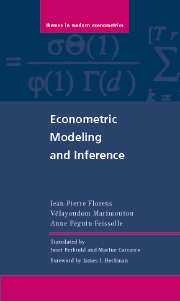15 - Nonlinear Dynamic Models
Summary
Introduction
The past 15 years have witnessed important developments in the modelling of nonlinear time series. This modelling opens the path to a variety of different models. It poses multiple difficulties, both from a theoretical point of view relative to the basic properties of the models and the estimators, and from an empirical point of view, for instance in the choice of the specification of nonlinearity.
The theoretical basis that is necessary to prove consistency and asymptotic normality of the moment estimators has been treated in Chapter 2, including for the non i.i.d. case. Indeed, Chapter 2 introduced tools that allow us to apply the law of large numbers and the central limit theorem to dynamic models. In particular, we have seen the concept of statistical models that are uniformly mixing stationary and the concept of near epoch dependence (NED). This enabled us to state Theorem 2.6 in Chapter 2, which is nothing but a central limit theorem for stationary mixing processes. We will return to some of these concepts again in this chapter.
Here, we are not attempting to provide a general and comprehensive presentation of nonlinear dynamic models because each model has characteristics and properties that result in complexity and difficulties that are specific to those. Moreover, the study of these models is expanding fast. Therefore, we will settle for the presentation of some examples only.
Information
- Type
- Chapter
- Information
- Econometric Modeling and Inference , pp. 366 - 392Publisher: Cambridge University PressPrint publication year: 2007
